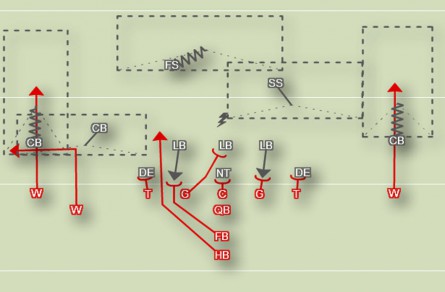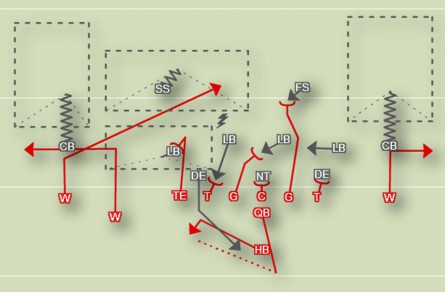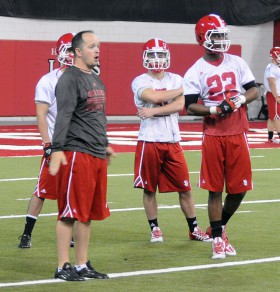Is everyone pumped?!! Ready to bring that Mariota, DAT, Barner or LaMichael jersey out of off-season hibernation?! I know I couldn’t be any more excited! It’s the most wonderful time of the year — on the doorstep of the new college football season.
If you’re reading this article right now, you probably agree with me and can’t wait to watch Texas A&M and the Gamecocks go at it tonight. Or, if you want to see some Pac-12 teams, then you’re going to be watching Utah, Washington State or Arizona State … or maybe even all three! Some of you may just wait until Saturday and then watch hours and hours of beautiful football and finish the day off with your Ducks at 7:30 p.m. No matter what you do, clearly this is the most wonderful time of the year.
In my effort to learn as much as I could about South Dakota, I may have watched more film than any coach or player, but the most important part of this game is the team’s mental state on Saturday. You know the Coyotes will be ready. Everyone on the Ducks’ side must be focused; they can’t be lackadaisical, or else we will see a lot of dropped balls, interceptions and missed tackles — or worse — long-term injuries.
OK, now that I’ve given my Braveheart pump up speech, let’s delve into the South Dakota playbook.
I’ve had to diagram these plays myself instead of using snapshots due to a lack of quality game footage.
The first play we are going to look at is USD’s version of Iso (above). The play is called Iso because the fullback is meant to be isolated with the linebacker in the hole when he goes for the block. Now, this play is relatively basic, but when executed properly, it can be an extremely effective play.
The left tackle of the Coyotes is going to block the right defensive end, and he’s going to let the end get upfield if he wants to, but he can’t let him get inside at all or else the play is going to end up being a tackle for loss (TFL). The interior blocking is similar to zone blocking in assignments, but we can watch the right guard to see if he is going to block the backside linebacker. This block is one of the most important of this play, because if this block is not made, the backside linebacker will most likely make the tackle from behind.
The final (and possibly second-most important) block is the block made by the fullback in the hole. I like to call this block, “the block heard ’round the world.”
I call it that, because the fullback – generally a bruiser who just loves to destroy anyone and anything coming his way – is going to meet a linebacker — often the most vicious and hardest hitting player on the team — in the hole.
To add to the intensity of this block, each player is going to have a 4-5 yard head of steam. You can almost see sparks flying off the helmets as these two collide. The offense hopes that the fullback wins this epic battle, leaving a massive hole for the running back to run through for at least 6-7 yards, while we hope our linebackers win this matchup. This is going to be a great one to watch.
The screen play shown above is executed near flawlessly every time the Coyotes run it. Plus, it seems like the USD coaches can read the minds of others as the play always seems to be called at the perfect time.
At the snap, the left tackle is going to let the right defensive end go untouched, but still act like he is pass blocking. This makes it seem like the tight end and left tackle had a miscommunication on who was supposed to block the right defensive end, but doesn’t give away the fact that it’s a screen.
All of the aforementioned parts of this play above were the variations that USD runs, and the offensive linemen are going to do the usual pass-block-and-move of a screen pass. The part that is not as well known in screens is when the right guard is going to go blast the linebacker or the free safety (whoever is more dangerous). This blocking technique is called “seeing color” and the purpose of seeing color is to eliminate the biggest threat, but without giving the blocker a specific assignment.
As we all know, the defense always tries to mix things up, so the player is told to block the most dangerous player. The receivers run routes (as you see above) to pull the defenders away from the play, while the running back has to just hit the right defensive end (the left tackle defender “forgot” to block) and then let him by and turn and catch the ball.
Unlike most other screens, this play isn’t necessarily designed to result in a touchdown. This version is meant to just get 10-15 yards, but is much harder to sniff out than a screen, thereby giving it a higher success rate. The Coyotes will test the Ducks with this play, giving us a preview of the many screen plays we will see throughout conference play.
Last year, the Coyotes used two quarterbacks: Kevin Earl (No. 14), the better passer, and Josh Vander Maten (No. 7), the more option-based quarterback.
This season, the Coyotes are “going to find different ways of getting [their] best 11 players on the field” as Coyotes Offensive Coordinator Wesley Beschorner told the Coyotes media team. That is going to mean that we are going to see less of No. 7 at quarterback and more of No. 14, but Vander Maten will still be on the field as a receiver or running back often as he is one of their most athletic and versatile players.
The Coyotes also have a multitude of running backs, as they return Trevor Bouma (No. 21), Jordan Roberts (No. 23) and Jasper Sanders (No. 3), who missed all of the 2013 season with a wrist injury. So, expect a variety of formations and sets from USD on Saturday, varying from a spread such as Oregon’s (minus the options but heavy on the run), to pro sets with two tight ends or two running backs. Watching the Coyotes will test your football knowledge as you try to see if you know about more than just the spread or just the pro set.
On the defensive side of the ball, the Coyotes have lost some major pieces from last year, such as seventh-round pick and team-leading tackler, Tyler Starr (LB), and two other top five tackle leaders, and most of their secondary. Yikes! … and people think Stanford has a lot of pieces to replace.
Despite this, some think that this may be the deepest secondary corps in Defensive Coordinator Jason Petrino’s Coyote career. Expect Mariota & Co. to attack that secondary often, although you couldn’t fault the Ducks for running the ball, as the Coyote run defense was pretty porous last year.
To address the vulnerability to the run, Coach Petrino is likely going to put more people in the box and make teams beat them through the air. As Petrino has observed and explained to the Coyote media team, “when teams faced third-and-medium or third-and-long, we were able to get creative and get stops.”
Expect to see the Coyotes defense take a lot of chances with blitzes off the corners as they gear up to stop the run. They are probably going to want to force Mariota to beat them with his arm and head, as they want to try and create turnovers from bad decisions and rushed or forced throws due to pressure.
This game likely is the game of a lifetime for most USD players, so they are going to come out looking for blood. Don’t be completely surprised if this game ends up like the UCLA game last year, as it’s the first game of the year and Oregon may be a little rusty; but all indications point to the game being more like a Nicholls State or Tennessee Tech game. Either way, it’s the start of a wonderful time, so let’s all rejoice as our bosses begin to dread the “football first, work second” life.
“Oh how we love to learn about opponents on FishDuck.com.”
Rory Davidson
Opponent football analyst for CFF Network/FishDuck.com
Eugene, Oregon
Top photo by Tim Hynds/Sioux City Journal
Related Articles:
Chip Kelly Update: Everything's Good Again ...
Chip Kelly Update: Wailing and Gnashing of Teeth
Shock and Awe -- The Oregon Ducks' Football Hangover Effect
Despite Lopsided Score, Georgia State "Never Stopped Believing"
Hope Springs Eternal for Ducks
Incompetent Pac-12 Officials: How Do You Miss ALL of THIS?
Rory Davidson: Rory (Football Analyst) is a sophomore at Oregon in the fall (Class of 2018). He has been a devout Stanford football fan since he was 2 months old and is excited about the energy and greatness Oregon sports has to offer. For the past 6 years he has been doing advanced data analytics for his high school football team and working alongside the coaches to understand how they strategize about the game. He wants to integrate more statistics into his analyses and try to help readers learn about and understand the future of sports.






